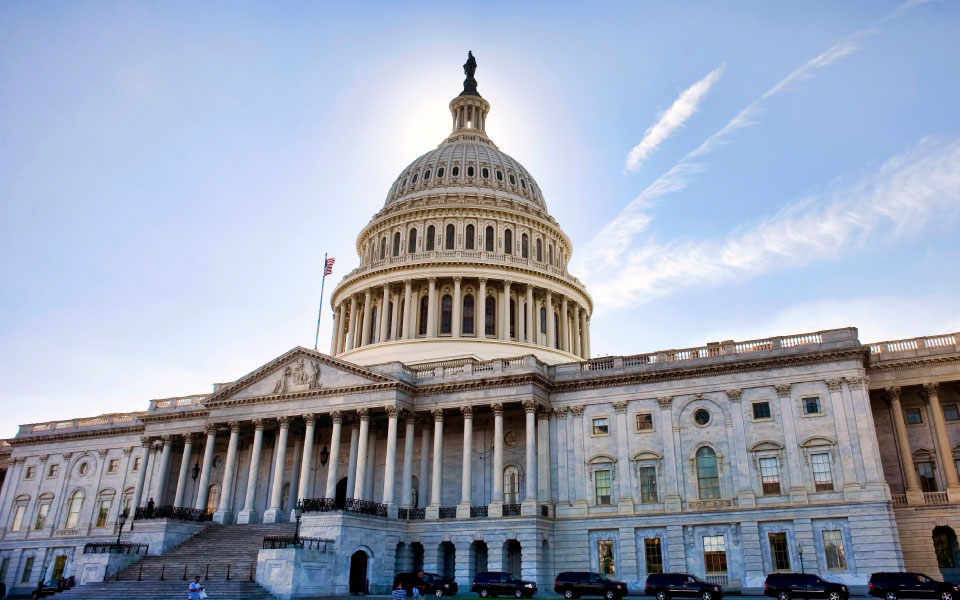On July 4, 2025, President Trump signed into law the One Big Beautiful Bill Act (OBBBA), the most sweeping tax bill since the Tax Cuts and Jobs Act (TCJA) of 2017. The OBBBA includes a number of extensions of TCJA provisions originally slated to expire at the end of 2025. It also repeals several energy credits and includes other tax-related revenue raisers.
While the OBBBA leaves the taxation of carried interest untouched, it does contain several tax provisions with direct relevance to the alternative investment industry, including fund managers, portfolio companies, and investors.
Provisions Directly Affecting Alternative Investments
Qualified Opportunity Zone Incentives
The OBBBA establishes a new Qualified Opportunity Zone (QOZ) program that includes several notable modifications to the former program. Under the new permanent program, opportunity zones will be redesignated every 10 years, beginning Jan. 1, 2027, with the current designations now scheduled to expire on Dec. 31, 2026, two years earlier than under prior law.
The gain deferral mechanism under the new program will not be available unless proceeds from a capital gain transaction are reinvested within the 180-day period beginning after Dec. 31, 2026, which may lead to a pause in investments in opportunity zones until that date draws nearer.
The gain reduction percentage is 10% for new opportunity zones if the taxpayer held the investment for at least five years, or 30% for investments in a new category of “qualified rural opportunity funds.” The former program’s 15% gain reduction percentage for investments held at least seven years is not offered under the new program. Similar to the former program, taxpayers can completely exclude gains from the sale of a qualified opportunity zone investment itself, to the extent the investment is held for at least 10 years. A new ability to step up the basis of the qualified opportunity zone investment to fair market value (without the need to sell) is provided for investments held in excess of 30 years under specified conditions.
Section 899 Increase in Tax Rates on Certain Foreign Taxpayers Nixed
The House version of the bill included a proposed Section 899 surtax targeting foreign investors from jurisdictions that impose “unfair” foreign taxes on U.S. businesses. However, the provision was dropped during final Senate negotiations and is not part of the enacted law after the U.S. reached a “shared understanding” with G7 countries that Pillar Two under the OECD should not apply to U.S. multinationals. Asset managers concerned about treaty overrides or foreign investor withholding implications may breathe a temporary sigh of relief, but should remain alert for future reconciliation bills if the international consensus breaks down.
REIT Subsidiary Asset Test Changes
The OBBBA amends section 856(c) to increase the limitation on investments in securities of taxable REIT subsidiaries from 20% to 25% for tax years beginning after Dec. 31, 2025.
Partnership Disguised Sale Rules Not Dependent on Regulations
The OBBBA includes an amendment to section 707(a)(2), which deals with disguised fees for services and disguised sales of property and partnership interests. The amendment specifies that the statute is applicable “except as provided by the Secretary”. Previously, section 707(a)(2) operated “under regulations prescribed by the Secretary;” however, finalized regulations for disguised sales of partnership interests have never been issued. This change could broaden the IRS’s authority in recharacterizing certain partner transactions, and managers should closely monitor deal structuring.
Provisions Impacting Portfolio Companies
The OBBBA includes several temporary provisions that likely will benefit portfolio companies, such as restoring 100% bonus depreciation, permitting the immediate deduction of domestic research or experimental expenditures, and reverting the section 163(j) interest deduction limitation to an EBITDA-based calculation. Also, while the bill imposes a new 1% floor on charitable contribution deductions by corporations, it leaves the state and local tax deduction of corporations intact.
Domestic Research and Experimental Expenditures
The OBBBA permanently allows taxpayers to immediately deduct domestic research or experimental expenditures paid or incurred in taxable years beginning after Dec. 31, 2024. Small business taxpayers with annual gross revenues of $31 million or less are permitted to apply the change retroactively to tax years beginning after Dec. 31, 2021. Taxpayers still have the option to elect to capitalize and amortize these costs, if desired. However, foreign research and experimental expenditures remain subject to capitalization and amortization over 15 years, as they were under prior law. To the extent a taxpayer wants domestic expenditures to remain subject to capitalization, the unamortized balance of such domestic capitalized costs may be recovered upon disposition, retirement, or abandonment of the project with respect to which they were incurred. However, the OBBBA prohibits the same for foreign research and experimental expenditures that were capitalized.
Section 163(j) Interest Expense Deduction Limitation
The interest expense deduction limitation under section 163(j) was originally implemented as part of the Tax Cuts and Jobs Act (TCJA) and imposes a limitation on the deduction of business interest expense equal to 30% of “adjusted taxable income” (ATI). Through 2021, ATI generally corresponded with EBITDA, but beginning with 2022, it was reduced to EBIT. This reduced the amount of deductible interest for businesses with meaningful depreciation and amortization deductions. The OBBBA permanently reverts ATI back to EBITDA for tax years beginning after Dec. 31, 2024.
Bonus Depreciation
The OBBBA permanently allows for 100% bonus depreciation for qualified property (including aircraft) acquired and placed in service after Jan. 19, 2025, so long as the property was not subject to a written binding contract prior to such date. The OBBBA also includes 100% bonus depreciation for qualified production property, which is defined to include the portion of any nonresidential real property located in the U.S. that is:
- Subject to depreciation under section 168,
- Used by the taxpayer as an integral part of a qualified production activity,
- Constructed after Jan. 19, 2025, but before Jan. 1, 2029, and
- Originally placed in service by the taxpayer after July 4, 2025 and before Jan. 1, 2031.
Charitable Contribution Limitations for Corporations
The OBBBA introduces limitations on the deductibility of charitable contributions by corporations by establishing a deduction floor equal to 1% of taxable income and a ceiling of 10% of taxable income. Any charitable contributions disallowed for a tax year under this rule are subject to a five-year carryforward period, unless they are disallowed solely because of the 1% floor (in which case, they are permanently disallowed).
Provisions Affecting Investors and Individuals
Excess business loss deductions
Noncorporate taxpayers may not deduct business losses from a trade or business in excess of a certain threshold, currently set at $626,000 for joint filers. Any losses in excess of this threshold are considered excess business losses (EBL) and are carried forward as a net operating loss (NOL) to future years. This provision, first established under TCJA, was set to expire at the end of 2028. The OBBBA makes the EBL limitation permanent and continues to treat the resulting EBL disallowance as an NOL in the following year. This effectively allows the losses to offset any income type in future years, subject to the 80% NOL deduction limitation, sometimes resulting in only a one-year timing difference.
Section 199A Qualified Business Income and BDC Dividends
The Act makes the section 199A Qualified Business Income (QBI) deduction permanent, with the deduction percentage set at 20%.
It eases the phase-in of the section 199A deduction limitation by raising the threshold amounts from $50,000 to $75,000 for single filers and from $100,000 to $150,000 for joint filers. This change could reduce the impact of the wage and capital limitations on pass-through owners, including those in specified service trades or businesses (SSTBs). The bill also adds a $400 minimum deduction for taxpayers with at least $1,000 of qualified business income from a business in which they materially participate, as defined under section 469(h).
SALT Cap and Pass-through Entity Tax Deduction
The OBBBA makes several changes to the state and local tax (SALT) deduction limitation that was enacted with the TCJA. First, it increases the amount of deductible state and local taxes from $10,000 to $40,000 beginning with the 2025 tax year and effective through 2029. The increased deduction cap is reduced by 30% of a taxpayer’s modified adjusted gross income in excess of $500,000 ($250,000 for married taxpayers filing separately), potentially returning to the former $10,000 cap.
Notably, the OBBBA did not adopt House-proposed provisions that would have permanently disallowed deductions at the individual level for pass-through entity taxes (PTET) paid by partnerships and S corporations carrying on an SSTB, as defined under section 199A, by pulling such PTET deductions into the SALT cap limitation calculation.
Qualified Small Business Stock (QSBS) Exclusion
The OBBBA introduces significant enhancements to the QSBS gain exclusion rules, aiming to make them more accessible and impactful for early-stage investors. For QSBS acquired at original issuance after the enactment date of the OBBBA, the gain exclusion is now tiered: 50% for stock held at least three years, 75% for four years, and 100% for five years. The OBBBA also expands the per-issuer exclusion cap from $10 million to $15 million, indexed for inflation (beginning in 2027), subject to a greater exclusion based on 10 times the taxpayer’s basis in the stock. Importantly, the corporate gross asset limitation is also increased from $50 million to $75 million, also inflation-indexed (beginning in 2027), which broadens the range of companies eligible to issue QSBS.
Individual Tax Rates
Effective Jan. 1, 2026, the OBBBA permanently extends the individual tax rates implemented by TCJA and thus keeps the 37% top tax rate in place. Income bracket thresholds are indexed annually to chained CPI. The 20% maximum tax rate on long-term capital gains and qualifying dividends is also retained.
Changes Impacting Tax-Exempt Investors
The OBBBA contains several tax provisions impacting tax-exempt organizations. Certain private colleges and universities investing in alternative investment funds will likely be most impacted by the modification of the endowment excise tax rate for investment income. The tax rate on such income will be tied to the “student adjusted endowment” amount and can rise as high as 8% if that amount exceeds $2 million. An institution’s student-adjusted endowment is equal to the aggregate fair market value of the institution’s assets (other than those assets used directly in carrying out the institution’s exempt purpose), divided by the number of eligible students of the institution. Notably, eligible students only include U.S. citizens or permanent residents, or those able to provide evidence from the U.S. Immigration and Naturalization Service that they are in the U.S. for purposes other than a temporary stay, with the intention of becoming a citizen or permanent resident.
State colleges or universities, qualified religious institutions, and those with student-adjusted endowments of less than $500,000, among others, are exempt from this provision.
Changes Affecting Trusts, Gifts, and Estates
The OBBBA also makes the unified gift and estate tax exemption permanent and sets it to an inflation-adjusted amount of $15 million per taxpayer ($30 million for married couples filing jointly) for tax years beginning after Dec. 31, 2025. It does the same for the generation-skipping transfer tax exemption. The current income tax rates and brackets for trusts and estates are also made permanent, with adjustments for inflation.
Have Questions?
Please connect with our Private Equity team.
© Copyright CBIZ, Inc. All rights reserved. Use of the material contained herein without the express written consent of the firms is prohibited by law. This publication is distributed with the understanding that CBIZ is not rendering legal, accounting or other professional advice. The reader is advised to contact a tax professional prior to taking any action based upon this information. CBIZ assumes no liability whatsoever in connection with the use of this information and assumes no obligation to inform the reader of any changes in tax laws or other factors that could affect the information contained herein. Material contained in this publication is informational and promotional in nature and not intended to be specific financial, tax or consulting advice. Readers are advised to seek professional consultation regarding circumstances affecting their organization.
“CBIZ” is the brand name under which CBIZ CPAs P.C. and CBIZ, Inc. and its subsidiaries, including CBIZ Advisors, LLC, provide professional services. CBIZ CPAs P.C. and CBIZ, Inc. (and its subsidiaries) practice as an alternative practice structure in accordance with the AICPA Code of Professional Conduct and applicable law, regulations, and professional standards. CBIZ CPAs P.C. is a licensed independent CPA firm that provides attest services to its clients. CBIZ, Inc. and its subsidiary entities provide tax, advisory, and consulting services to their clients. CBIZ, Inc. and its subsidiary entities are not licensed CPA firms and, therefore, cannot provide attest services.















